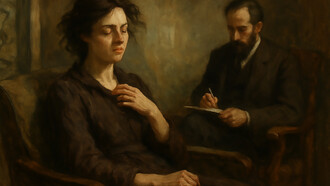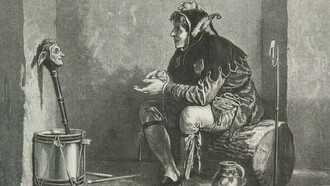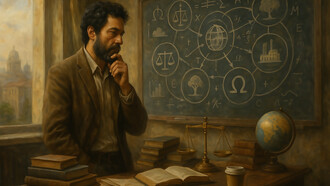It is impossible to turn one's eyes to nineteenth-century Florence without coming across the "colony" of Anglo-Florentines who populated its villas and palaces, giving new impetus to the cultural life of the time. The beautiful journey to their discovery, made possible by Paola Maresca's volume: Gli Anglo-fiorentini nell'Ottocento a Firenze – Luoghi, passioni e segreti (published by Angelo Pontecorboli), is the starting point for our interview with the author, which allows us to retrace the intertwined lives of protagonists and co-players, in an excursus full of traces to follow and deepen.
Your volume can be read in different ways. It is an enjoyable novel with historical and biographical features, but as nimble as a compelling guidebook. How did you go about your research and how did you arrive at the profiles covered?
The volume has a long history: in fact, a few years ago while studying Florentine gardens, I had come across some of these singular characters, talked about them with my husband, and he, struck by their compelling lives, had the idea of writing a novel by two hands. Paolo, that was his name, devised the plot, the framework while I took care of the historical part by thoroughly researching the individual characters. I thus wrote a first draft. Later, overwhelmed by family events, my husband after a brief but inexorable illness left this land, the novel remained forgotten in a drawer. After about seven years I dusted it off and later showed it to my publisher (Angelo Pontecorboli) and together we thought of turning it into an essay. Thus, the book was born, possibly retaining some of the novel characteristics.
It is impossible to analyse the exploits of the Anglo-Florentines in the 19th century without keeping in mind their strong fascination with spiritualism. What do you think gave rise to this passion and what surprises, in this regard, did you come across while writing it?
After the parenthesis of the Enlightenment in the 1800s, it seems to me that this curiosity toward the spiritual world and in particular toward the afterlife was reborn, after all, the theme of survival after death has always fascinated mankind. Thus, interweaving the experimental spirit proper to the century with a curiosity about the unknown, the first investigations and researches in the spiritistic field were born. The spirit that characterizes them is, I would say, almost scientific.
Spiritualism was first born in America but would find fertile ground in England, and perhaps it is no coincidence that it was in London, in 1747, that the works of Emanuel Swedemborg, the great seer who had investigated with his mind's eye the world of spirits and angelic entities, were published for the first time. Spiritualism as a widespread practice among the characters described in the novel arises, in my opinion, more from a curiosity than from a need of a spiritual order, as witnessed by the fact that these characters with uncommon overtones are in essence men and women of sensitive and elevated spirits, such as artists, men of letters and poets generally are, devoted to listening to the impulses of the soul and expressing them through art. Their pursuit of contact with the Afterlife is based on an awareness of the immortality of the soul and its purifying path, which occurs, as Mazzini himself argued, through a series of earthly lives, that is, successive reincarnations.
My surprise was to discover that this thin red thread linked almost all the people in the Florentine sphere who gravitated around the Brownings and constituted almost a passe-partout for entering their circle.
Elizabeth and Robert Browning are, famously, two pivotal figures in Florence at the time. What remains of them in the city, so many years after the events narrated? I am thinking, above all, of the English Cemetery and Casa Guidi....
The Florence of the Brownings in my opinion has basically disappeared just as the old historic centre has disappeared, while some of their favourite places, such as the Doney Café and the English Pharmacy, have been transformed into commercial establishments, which retain very little memory of their past. Testimonies that still speak to us of their lives are surely Casa Guidi and, on the hill of Bellosguardo, Villa Brichieri-Colombi and the Torre di Montauto, the former "palace" of Isa Blagden, assiduously frequented by the Brownings and their circle, and then immortalized in the novel The Marble Faun by Nathaniel Hawthorne, who spent much of his Florentine sojourn here.
Is there an itinerary, particularly dear to you, that you would recommend to a tourist who wants to get to know a different Florence? Even taking into account the other volumes you have published.
Certainly the hill of Bellosguardo can be a different itinerary for the tourist. Indeed, from here there is an unusual and fascinating view of the city, as the name itself suggests: Bellosguardo. The city that stretches out in a basin enclosed by the slopes of the rolling hills appears to be overlooked by the severe bulk of the Pitti Palace. I would almost say that the view is still the one the Brownings enjoyed from the terrace of Villa Brichieri. Although the villas that housed the English colony cannot be visited, what can still be perceived is the spirit of the places that hovers there. After all, as the plaque displayed on the main square of the small village reminds us, the place was a coveted sojourn of great personalities, mostly foreigners, poets, artists, musicians and men of letters, who found inspiration for their immortal works here.
I would like to add another suggestion: Florence is known to tourists and the world mostly as the cradle of the Renaissance, but few know that it was a real centre of hermetic culture that spread from here to all European courts, leaving indelible traces in the works of art that enrich the city. Think of Dante and the initiatory consorteria of the Fedeli d'Amore, to which the poet himself belonged, and which had continuity in the Florentine Platonic Academy, the flagship of the Medici dynasty. The Medici patrons of the arts enriched the city with distinguished works. The hermetic and alchemical thought professed by the Medici dukes and grand dukes until the threshold of the 1700s shines through in filigree from the works of art they commissioned. Examples are The Boboli Gardens, and the apartments of Cosimo I de' Medici in Palazzo Vecchio, just to name a few where references to this hermetic culture are hidden. In essence, it is not a matter of itineraries other than the usual ones but of seeing these monuments, works of art and gardens with different eyes not with those of the hurried tourist but by entering into the spirit of those who created them as an eternal testimony to a very ancient sapiential tradition.
May I ask what future projects you are working on? Will they still have Florence and/or art dedicated to gardens, as protagonists?
At the moment I don't have any well-defined projects yet, but certainly the city of Florence as well as gardens are the themes that fascinate me the most and that I would like to explore. I, too, follow a red thread in my studies, which is that of the symbolic interpretation of places or monuments, and the city of Florence with its works of art, monuments and gardens is very rich in testimonies that go back to a sapiential tradition carried on by the seekers of Truth. Even this last paper of mine on the English in Florence somehow connects to this strand, in fact the animic disposition that characterizes the lives and works of these characters, accumulates all those who are devoted to the search for what the mind does not see but the spirit perceives.















